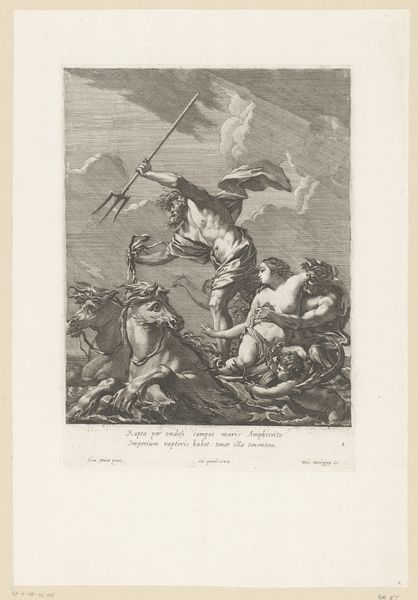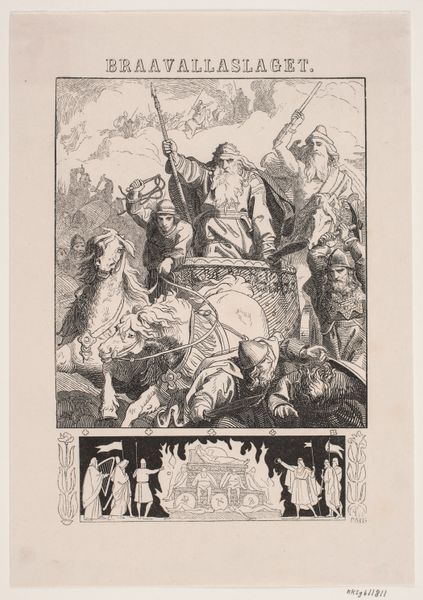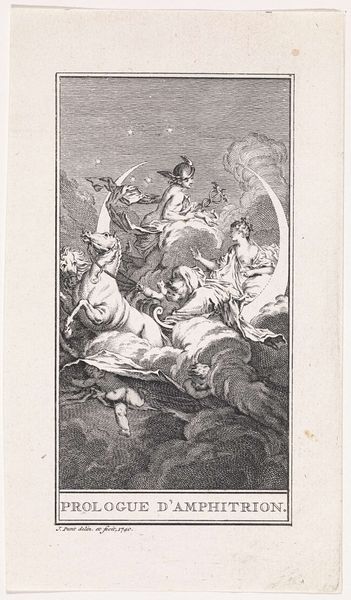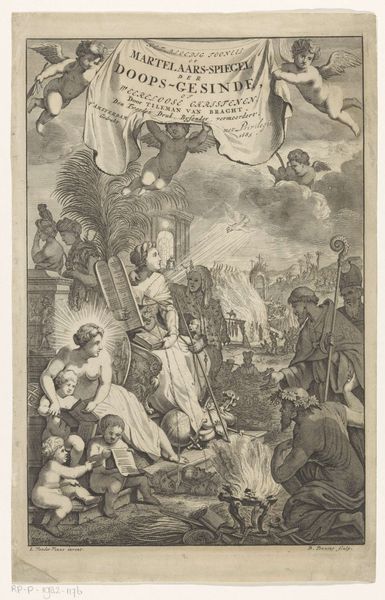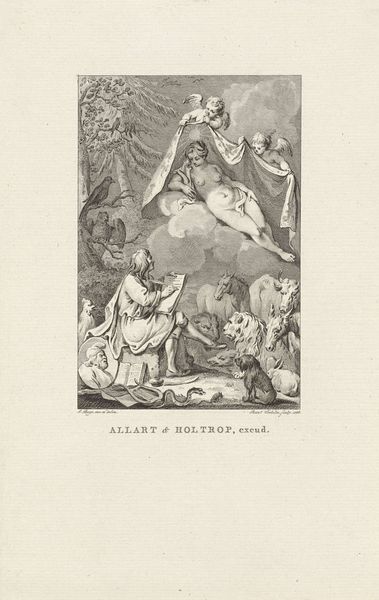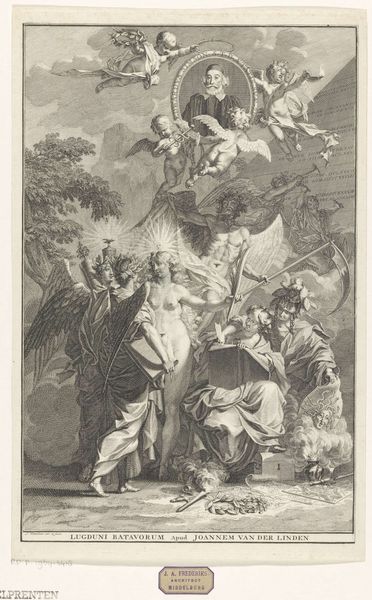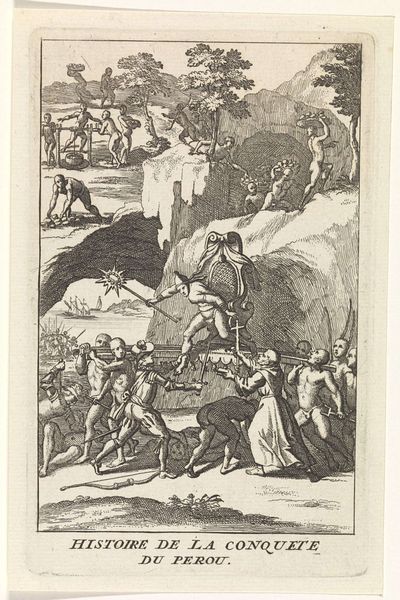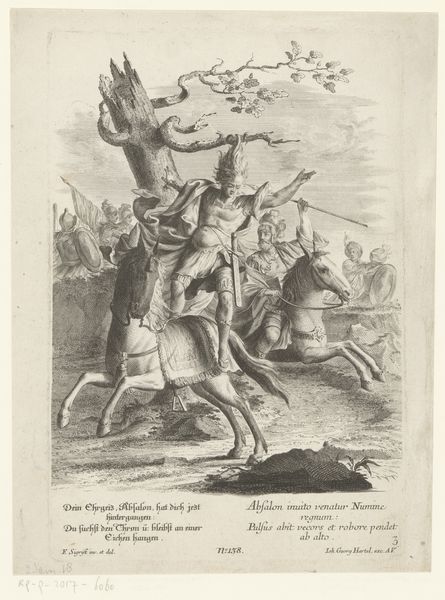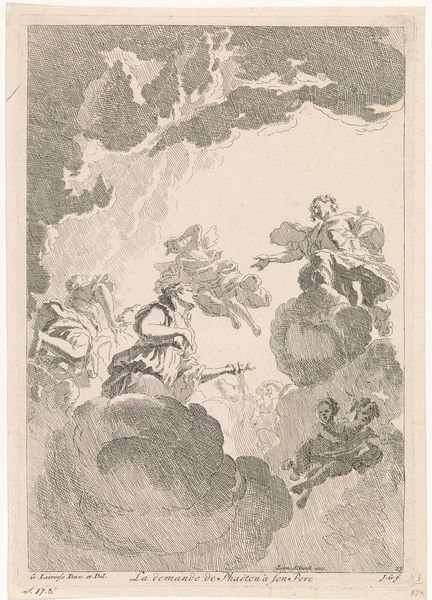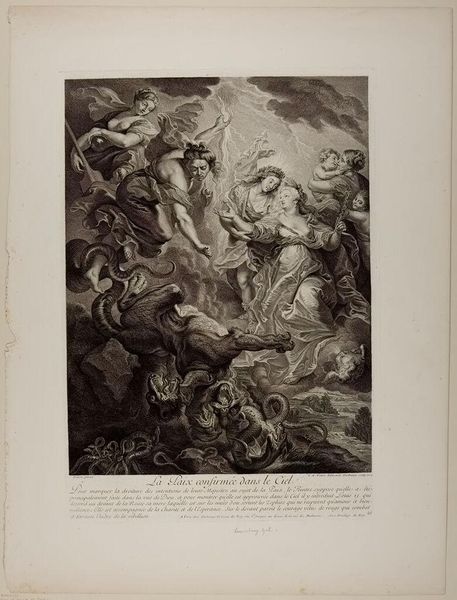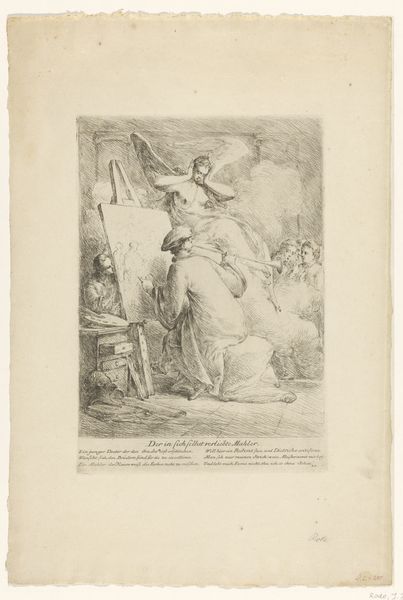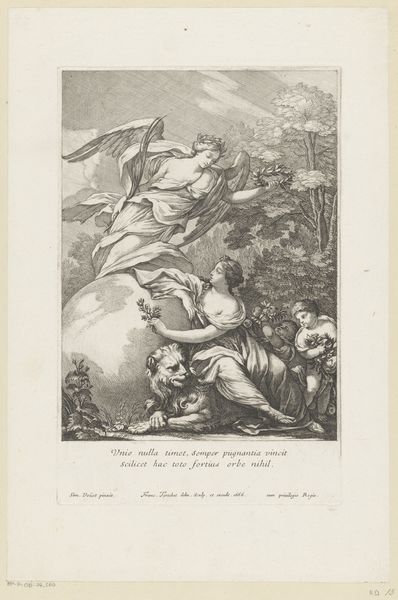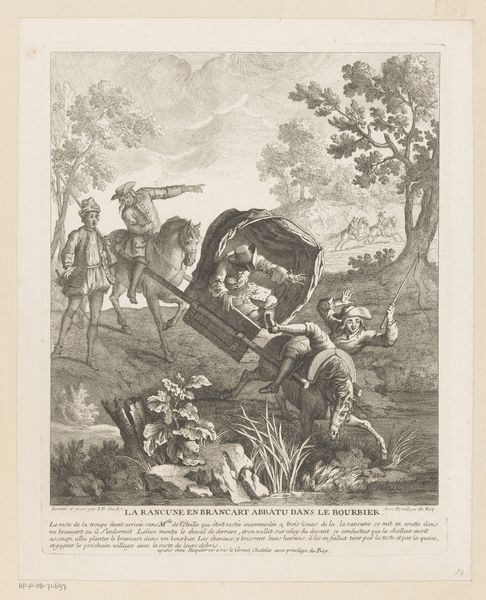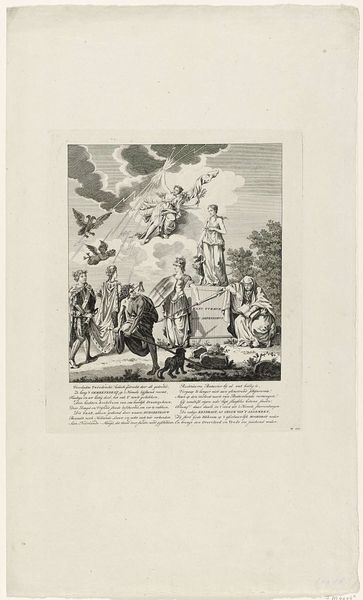
#
muted colour palette
#
traditional media
#
collage layering style
#
retro 'vintage design
#
historical fashion
#
muted green
#
watercolour illustration
#
cartoon carciture
#
green and neutral
#
watercolor
Dimensions: height 293 mm, width 233 mm
Copyright: Rijks Museum: Open Domain
Curator: This work is entitled "Allegorie op het herstel van Willem V als stadhouder, 1787", or Allegory on the Restoration of William V as Stadtholder, 1787, from an anonymous artist. It resides in the Rijksmuseum. Editor: My initial reaction is that it’s a wonderfully busy, almost chaotic, watercolor. There’s a lot happening allegorically, but I’m particularly drawn to the muted green and neutral color palette that gives it an antique feel. Curator: Indeed. It depicts the political climate surrounding William V's reinstatement, showcasing the interplay of historical figures and symbolic elements to legitimize his restored authority. Looking closely, we see Willem V and an allegorical female figure, likely representing the Dutch Republic, standing triumphantly. Lightning strikes down on his foes while, to the left, other figures, perhaps representing Justice and Wisdom, look on. The visual vocabulary tells a clear story of restored power and divinely sanctioned rule. How does this representation speak to contemporary understandings of leadership and power? Editor: Considering today's socio-political lens, such overt glorification of power appears problematic. The very imagery, filled with classical allegories, signals an elite class reinforcing its position. A modern viewer may question whose interests are truly being served here, examining whether the promised "Overvloed en Vrede" will extend to all or only to a privileged few. And in whose narrative is justice really served? It compels us to dissect these historical representations for the ideological frameworks they promote and, perhaps, conceal. Curator: Precisely. By historicizing such images, we are better able to dismantle similar propagandistic efforts happening in our contemporary information landscape. It becomes imperative that art serves as an arena where those affected can actively decode these historical frameworks and formulate counter-narratives reflecting more inclusive accounts. Editor: Agreed. Investigating such artworks compels us to stay wary, analytical, and sensitive to the embedded messages within what appears as mere aesthetic imagery. It encourages vigilance, critical awareness, and intersectional thinking when we confront comparable images circulating today. Curator: I see this examination as critical to dismantling any structures seeking dominance. Editor: And I find this a great tool in which we equip audiences with enhanced socio-political observational capabilities.
Comments
No comments
Be the first to comment and join the conversation on the ultimate creative platform.
